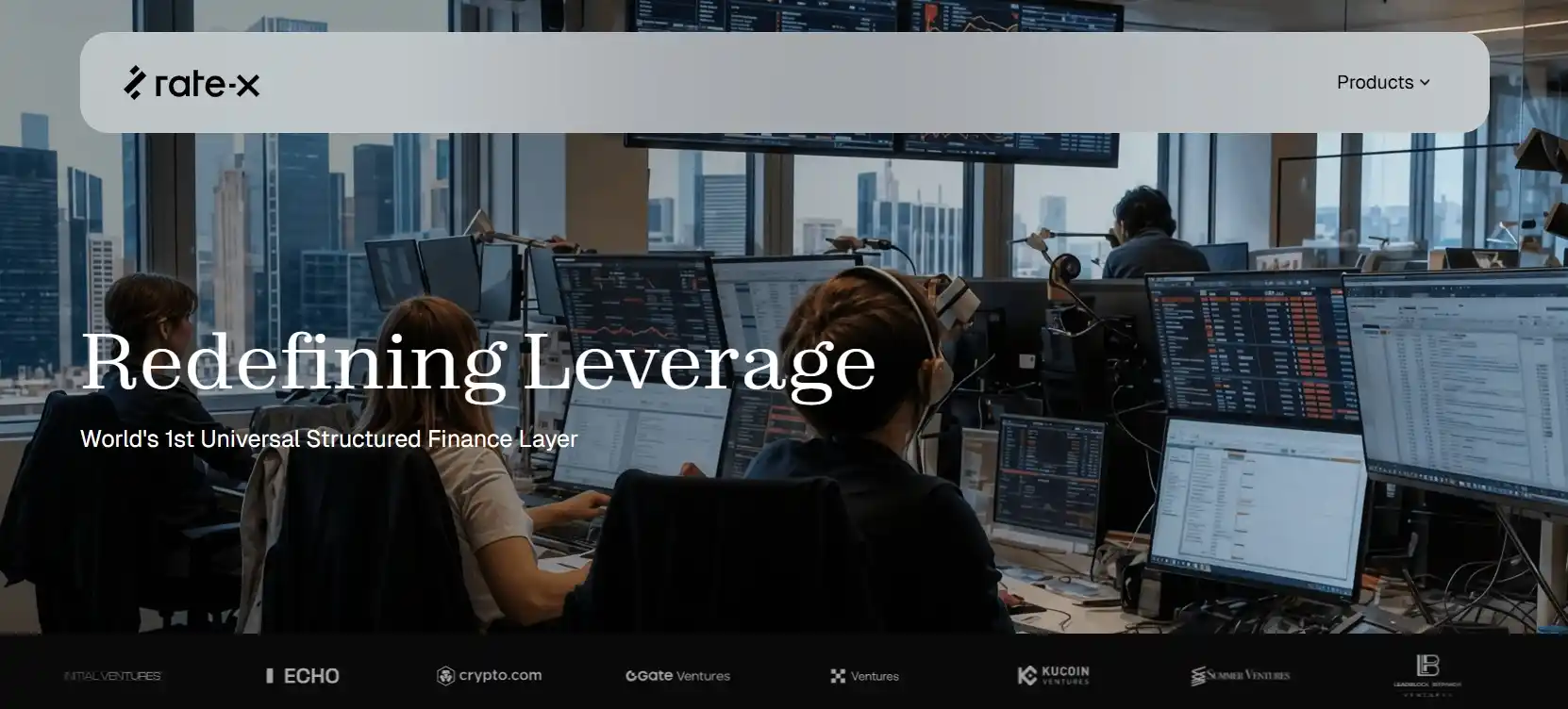In the rapidly evolving world of Decentralized Finance (DeFi), users face the challenge of finding optimal solutions for asset exchange. Fragmented liquidity across multiple blockchains and high transaction fees create significant barriers. The RateX project aims to fundamentally change this situation by offering a universal protocol that not only aggregates offers from leading Decentralized Exchanges (DEXs) but also ensures seamless cross-chain swapping. This solution opens new horizons of efficiency and accessibility for all cryptocurrency market participants.
Contents:
- Mission and Vision of RateX
- Key Technological Advantages of the Protocol
- RATE Token: The Foundation of the Ecosystem
- How RateX Works
- Project Prospects and Development
- Conclusion
Mission and Vision of RateX
The primary goal of RateX's creators is to form a universal and inclusive financial ecosystem accessible to users worldwide. The project strives to eliminate traditional complexities associated with cross-chain interaction and finding favorable exchange rates. Unlike many analogues, it focuses on creating a seamless experience where deep technical knowledge is not required to execute an optimal trade. The platform's ideology is built on the conviction that advanced technologies should serve to simplify and optimize financial operations, making them more transparent and democratic for everyone.
The project's vision extends beyond simple swap aggregation. The RateX team is working on building a comprehensive decentralized platform that will eventually offer a wide range of financial products. This approach allows RateX to be viewed not as a single service, but as a multifunctional hub capable of becoming a key element in the Web3 infrastructure. This is a long-term strategy aimed at creating sustainable and constantly growing value for the entire ecosystem and holders of the native token.
Key Technological Advantages of the Protocol
The fundamental advantage of RateX lies in its sophisticated architecture, which integrates several powerful technological solutions. The core of the system is an advanced liquidity aggregator that scans offers on numerous decentralized exchanges in real-time. This allows the protocol's algorithm to automatically select the most profitable route for asset conversion, saving user funds and minimizing price slippage. Such depth of analysis is unavailable when working with individual DEXs.
Another critically important component is the cross-chain bridge, ensuring the seamless movement of assets between different networks such as Ethereum, BNB Chain, Polygon, and others. Thanks to this, users can manage a multi-protocol portfolio from a single interface without resorting to third-party services. To ensure maximum security for all transactions, time-tested smart contracts and cryptographic protection methods are used, making interaction with the platform not only convenient but also reliable.
RATE Token: The Foundation of the Ecosystem
The native token RATE serves as the fundamental element of the entire project ecosystem, ensuring not only its operation but also sustainable development. This universal asset is endowed with numerous practical functions that create constant demand and increase its utility for holders. The multi-level tokenomics model is carefully designed to form a balanced economy where every participant benefits from interacting with the platform.
Key token functions include:
- Governance Participation: RATE holders gain the right to vote on key decisions determining the protocol's future development.
- Liquidity Incentives: Users providing liquidity to pools regularly receive rewards in RATE tokens.
- Fee Discounts: Using the asset to pay for fees within the protocol provides users with significant benefits.
- Access to Premium Features: In the future, the token will unlock access to exclusive products and enhanced platform capabilities.
This comprehensive approach fosters a healthy economic model where every aspect of the token's use enhances its value. As a result, RATE becomes not just a transaction tool, but a full-fledged asset integrated into all business processes of the ecosystem, creating a solid foundation for long-term growth.
How RateX Works
User interaction with the RateX protocol is characterized by simplicity and intuitive clarity, which hides complex algorithmic processes behind it. To initiate an exchange, it is sufficient to connect a wallet supporting EVM networks, select the source and target assets, and then confirm the transaction. At this moment, the system activates the optimal path finding mechanism, analyzing dozens of routes through integrated DEXs and cross-chain bridges to guarantee the best possible rate.
The process can be roughly divided into several key stages performed automatically:
| Step | Action | Result |
|---|---|---|
| 1 | User submits an exchange request. | The system receives the deal parameters. |
| 2 | Aggregator scans available liquidity sources. | A list of possible routes is generated. |
| 3 | Algorithm selects the path with the best rate. | The final volume of assets to be received is determined. |
| 4 | Swap is executed via a smart contract. | Assets are credited to the user's wallet. |
This level of automation relieves market participants from the need to manually monitor various platforms and conduct multiple operations. This entire complex technical process takes mere seconds, delivering the final result as a successful and economically efficient transaction.
Project Prospects and Development
The RateX roadmap demonstrates the team's ambitious plans for expanding the protocol's functionality. In the near future, integration with new blockchain networks and decentralized exchanges is expected, which will further increase liquidity reach and service accessibility for a global audience. Furthermore, development is underway on its own Decentralized Autonomous Organization (DAO), which will transfer full control over the project to the community.
Strategic plans include moving beyond swap aggregation and launching its own specialized financial products. This may encompass offerings in decentralized lending, staking with complex interest accrual mechanisms, as well as portfolio management tools. Such development will transform RateX from an exchange tool into a comprehensive digital asset management platform, strengthening its position in the competitive DeFi market.
Conclusion
RateX represents a qualitatively new stage in the development of decentralized finance, offering a comprehensive solution to key industry problems. The combination of an intelligent liquidity aggregator, cross-chain interoperability, and balanced tokenomics creates a unique proposition for users. The protocol not only simplifies working with different blockchains but also significantly increases operational efficiency.
The foundation of the architecture is blockchain, ensuring decentralization, security, and transparency. All operations are executed through smart contracts, eliminating intermediaries and reducing risks. The RATE token operates within a distributed network, implementing governance and incentive mechanisms. The project integrates organically into the Web3 ecosystem, reinforcing the principles of openness and accessibility of financial services.





